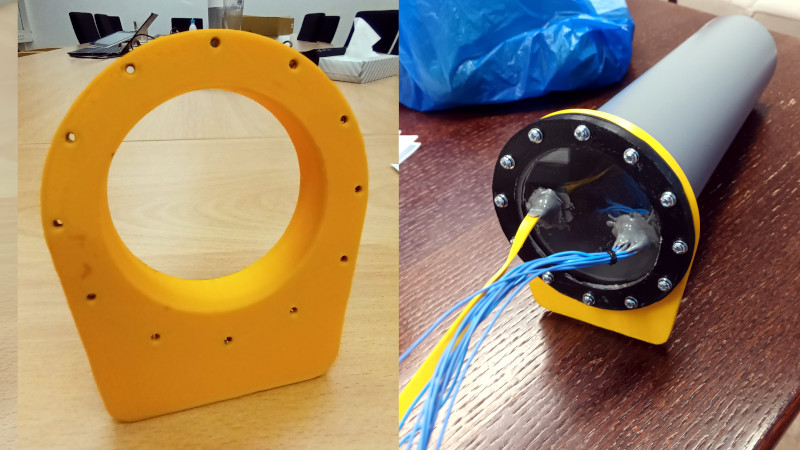The projects featured on these pages frequently rule the air, the ground, the rails, and even the waves, but very rarely do they rule the deep. Building a submarine is hard, and thus it’s a challenge not taken on by all but the most courageous of builders. This hasn’t discouraged [Timo] though, who has embarked on the construction of what is shaping up to be a very nice underwater ROV build.
The design is straightforward enough, with a PVC tubing frame carrying thrusters for maneuvering, and a central tubular compartment for the electronics and a camera. Control and power comes via a wired connection, and there is a companion controller holding a Pi Pico interfaced to a PlayStation controller.
So far the craft is a work in progress, and he’s engaged in a battle with water pressure to keep in dry inside. The fittings are all 3D printed, and this means a constant battle with warped prints and collapsing infill. He’s not given up though, and is instead recovering enthusiasm by working on the shore-side controller.
We look forward to seeing this project completed, meanwhile if you’re thirsty for more underwater projects take a look at the glider which won the 2017 Hackaday Prize.
















Very cool!
Anyone have thoughts on how much tether length an analog video signal can cover over this (CAT5?) cable before it starts degrading?
100meters, after that you need a repeater installed along with the cat5 cable
There was something called Rabbit not the current USB thingy that would send analog TV thru almost any kind of wire for some distance. It was some kinda low band RF. You had two boxes one at each end.
I’ve done 500 feet using cat 5 to rca baluns for an underwater camercorder housed in a diving light. I didn’t get 500 feet deep, I was just too lazy to cut and splice the cable. I suspect being in a hundred feet of water acted as a top notch rf insulator.
The solution to 3d printing problems is to print with an SLA resin printer instead of an SLA. Much higher tolerances, no problems with collapsing infill, and it will be naturally water tight. SLA printers are common and not expensive
Fill the thing with immersion cooling fluid like they use in some data centers, and the pressure problems go away.
Mineral oil
Not really. If the tube wasn’t made water tight then water will obviously force it’s way in every time you dive, mixing with your oil, and rendering the oil a useless insulator. It needs to be water tight.
Came here to write about oil immersion.
My understanding is that it has been used on deep diving rovs. But they have an external soft tank filled with oil that communicates with the pressure vessel. Thus as it goes deeper more oil is forced into pressure vessel thus equalizing pressure with surrounding environment.
Aside, I’ve been wanting to make an rov for a very long time. Nice to see more of these projects lately.
Since the unit is tethered is is an ROV, not a Submarine.
Do you get some weird joy out of arguing semantics..TROLL…TECHNICALLY: Sub meaning underneath or below, Marine meaning a body of water and all that it contains..SO it is a type of submarine.
Will never understand the desire to correct people to fill some need for superiority…
Duane Woods, Informative comment. Also, I am superior having served for 25 years in US Navy Submarines.
I’ve been driving cars for 27 years..that obviously means I know everything there is to know about cars as well as can speak to and am an authority of ALL proper automobile vernacular and can attempt to belittle people because I THINK I am superior…it doesn’t. Get over yourself hoss. 25 years on a submarine doesn’t automatically qualify you, for anything other than living in small spaces. It’s people like you that are a problem in the scientific community. Go whine to people on your gravy seal boards and leave the honestly truly superior people alone.